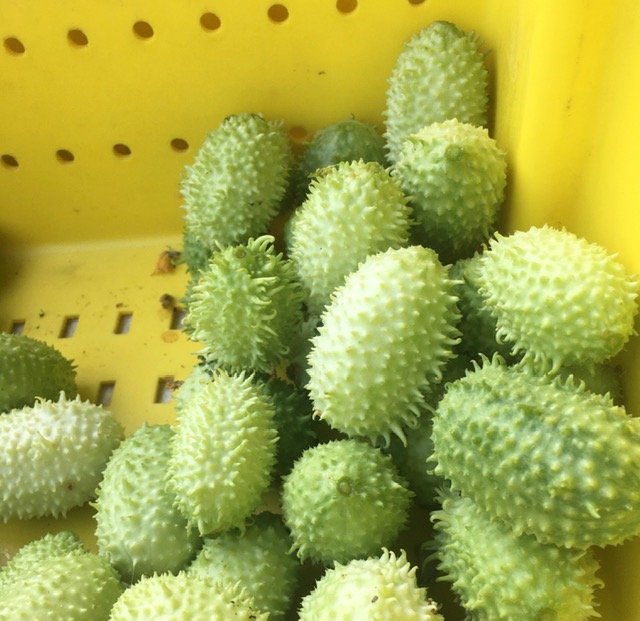Global Produce
Have you ever wondered how farmers choose what to produce? For multigenerational operations it was someone’s grandparents or even great grandparents who made the choice. Others who have a passion for the land and lifestyle go through a progression of agrarian endeavors before deciding. But in my experience I’ve found once you’ve dedicated yourself to farming sooner or later someone is going to had you a handful of seeds and ask you to grow them.
In my early days of farming before I went strictly livestock I had a market garden. Not with your regular ol’ seed catalog type vegetables, but varieties that no one else at the small, regional market in my hometown offered for sale. My favorite were the Cucuzza gourds. The seeds given to me by an Italian family who lived in the apartment over their pizza shop and didn’t have room to grow the long vines. But beware, those tender squash-like fruits went from the size of my finger one day to the size of my arm by the next, the Sha’Carri Richardson of the garden.
But it turned out that my Italian customers weren’t the only ones excited when I showed up at market with Cucuzza, so were the Moroccans and Greeks, all becoming wildly animated upon spying the familiar fare.
So last week on my early morning cruise around the market once I had my own stand set up I caught sight of something new, something I’d never seen before.
“What are these?” I asked my fellow farmer as I held up the egg-sized green spikey thing.
“Maxixe,” came the reply along with their provenance by way of seeds from another vendor who is originally from Brazil. (Pronounced mah-SHE-sheesh) I was going to ask him how to spell it but decided that searching the Internet for spikey green cucumbers from Brazil would yield sufficient results and it did, but not before I got the low down on these international tidbits from several of our market patrons who managed to snag a few.
“Look what I got!” they exclaimed in genuine excitement and would continue, “I haven’t had these since…” recalling a trip that required the use of their passport.
As the signs to Bethesda say, “The world in one neighborhood”, I learned that maxixe is popular with patrons originating in both South America, Africa and India. Excitedly they showed their score to me and in return I asked them how they prepared them. To my surprise, maxixe are most often cooked. My favorite was for a dish where they’re sauteed with onion, garlic, zucchini, tomato, coconut milk, cilantro, crab meat, and a fresh squeeze of lime. I could get most of the ingredients at market, the other constant staples in my pantry.
But I’ll have to wait until next week because I passed on them as there were limited amounts from the first harvest and I wanted the customers to have first chance knowing they were a taste of someone’s home. I was assured that the vines were prolific and there would be plenty more in the coming weeks at market.
Originating in Africa, maxixe have been naturalized around the world and became staples in multiple cuisines. They’re cooked with meats and fish and used in vegetarian dishes. They are pickled and eaten raw, but for this they tend to be seedy. The spines can be peeled off or left intact as they are not stiff and brittle, but fleshy.
Last week the New York Times ran an essay in their What to East on a Burning Planet series about the world’s diminishing food varieties and the fragility of our current supply chain. I’ve said it over and over, farmers markets are ahead of the pack when it comes to food security and keeping our customers fed. No matter where in the world you’re from, you’ll always find a taste of home at the farmers market, but make sure you’re first in line because like those giant blackberries, they’ll go fast.

